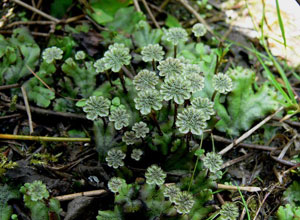Calling it the Rip Van Winkle of the plant world, nature is providing awe-struck researchers with a live sample of a plant that has woken up after being dormant for 400 years.
Incredibly, while exploring Teardrop Glacier way north in the Canadian Arctic, researchers noticed something "green." And it was growing.
It turns out the plant is an ancient bryophyte that emerged when the ice receded and began growing again – after being dormant for 400 years!!!
Since the Little Ice Age, this plant has been covered by ice, which is now receding because of climate change.

What’s amazing is that these plants precede the bryophyte we know on earth today. They do not have the vascular tissue necessary to pump fluids, Dr. Catherine La Farge, who found the plant, told BBC News.
Moss is a bryophyte, for example. "After 100 years, a moss may look perfectly natural and even retain it’s green color," explains Jonathan Shaw, who runs a bryology lab at Duke University, in an interview with PBS.
The other amazing thing, he says, is the ability for bryophytes to regenerate, but no one expected it would wait for 400 years.
As the world’s glaciers recede, more bryophytes will appear and repopulate the landscape the glaciers leave behind.
In fact, many plants are emerging from a long sleep under ice, such as cyanobacteria and green terrestrial algae, and some plants scientists have never seen before.
"It’s like lifting a blanket," La Farge told PBS.

Amazing, we should study it, but I hope we dont kill it off since it survived this much. It seems like once we know about it we as a civilization KILLS things….
I wonder what medicinal benefits this plant may possibly have and how we can help it to grow and flourish better now that it isn’t encased in ice anymore. I too hope that it isn’t killed off. I mean, 400 years, it could possibly be a way to cure something like cancer or AIDS. Or at least a better way to treat something like that.
Or, on a less optimistic note, this might have a toxin that could kill off half the planet, reawaken a dormant virus, or what have you. 😉